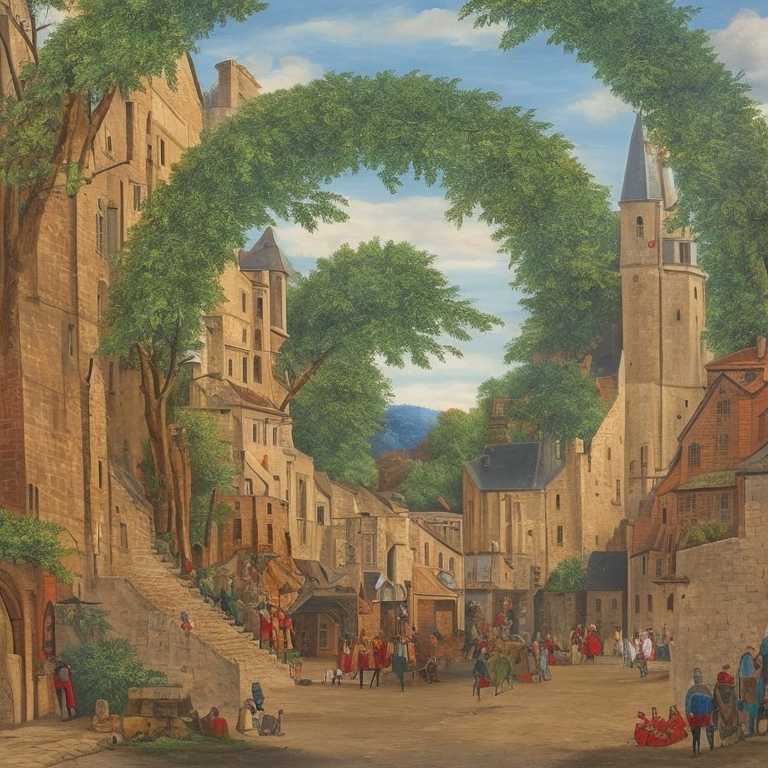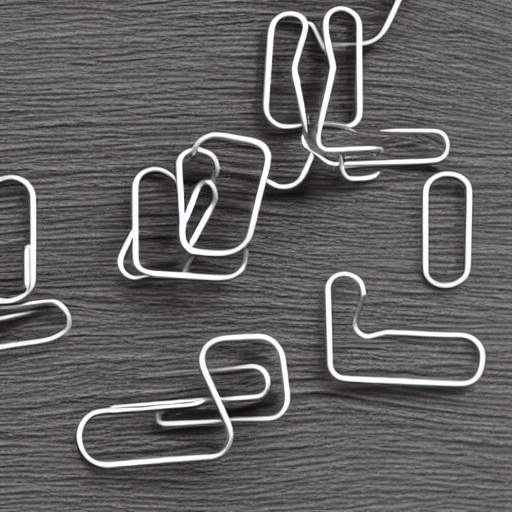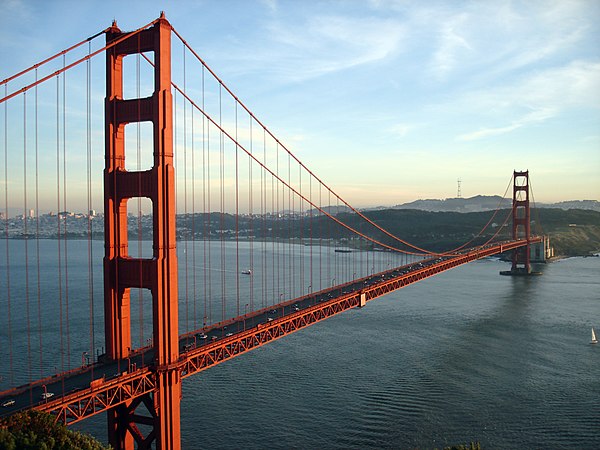illusion
Maintainer: andreasjansson

248

| Property | Value |
|---|---|
| Model Link | View on Replicate |
| API Spec | View on Replicate |
| Github Link | View on Github |
| Paper Link | No paper link provided |
Get summaries of the top AI models delivered straight to your inbox:
Model overview
The illusion model is an implementation of Monster Labs' QR code control net on top of Stable Diffusion 1.5, created by maintainer andreasjansson. It is designed to generate creative yet scannable QR codes. This model builds upon previous ControlNet models like illusion-diffusion-hq, controlnet_2-1, controlnet_1-1, and control_v1p_sd15_qrcode_monster to provide further improvements in scannability and creativity.
Model inputs and outputs
The illusion model takes in a variety of inputs to guide the QR code generation process, including a prompt, seed, image, width, height, number of outputs, guidance scale, negative prompt, QR code content, background color, number of inference steps, and conditioning scale. The model then generates one or more QR codes that can be scanned and link to the specified content.
Inputs
- Prompt: The prompt to guide QR code generation
- Seed: The seed to use for reproducible results
- Image: An input image, if provided (otherwise a QR code will be generated)
- Width: The width of the output image
- Height: The height of the output image
- Number of outputs: The number of QR codes to generate
- Guidance scale: The scale for classifier-free guidance
- Negative prompt: The negative prompt to guide image generation
- QR code content: The website/content the QR code will point to
- QR code background: The background color of the raw QR code
- Number of inference steps: The number of diffusion steps
- ControlNet conditioning scale: The scaling factor for the ControlNet outputs
Outputs
- Output images: One or more generated QR code images
Capabilities
The illusion model is capable of generating creative yet scannable QR codes that can seamlessly blend the image by using a gray-colored background. It provides an upgraded version of the previous Monster Labs QR code ControlNet model, with improved scannability and creativity. Users can experiment with different prompts, parameters, and the image-to-image feature to achieve their desired QR code output.
What can I use it for?
The illusion model can be used to generate unique and visually appealing QR codes for a variety of applications, such as marketing, branding, and artistic projects. The ability to create scannable QR codes with creative designs can make them more engaging and memorable for users. Additionally, the model's flexibility in allowing users to specify the QR code content and customize various parameters can be useful for both personal and professional projects.
Things to try
One interesting aspect of the illusion model is the ability to balance scannability and creativity by adjusting the ControlNet conditioning scale. Higher values will result in more readable QR codes, while lower values will yield more creative and unique designs. Users can experiment with this setting, as well as the other input parameters, to find the right balance for their specific needs. Additionally, the image-to-image feature can be leveraged to improve the readability of generated QR codes by decreasing the denoising strength and increasing the ControlNet guidance scale.
This summary was produced with help from an AI and may contain inaccuracies - check out the links to read the original source documents!
Related Models

illusion-diffusion-hq

308
The illusion-diffusion-hq model is a variant of the popular Stable Diffusion text-to-image AI model, developed by lucataco and built on top of the Realistic Vision v5.1 model. It incorporates Monster Labs' QR code control net, allowing users to generate QR codes and embed them into their generated images. This model can be seen as an extension of other ControlNet-based models like sdxl-controlnet, animatediff-illusions, and controlnet-1.1-x-realistic-vision-v2.0, all of which leverage ControlNet technology to enhance their image generation capabilities. Model inputs and outputs The illusion-diffusion-hq model takes a variety of inputs, including a text prompt, an optional input image, and various parameters to control the generation process. These inputs allow users to fine-tune the output and shape the generated image to their desired specifications. The model then outputs one or more high-quality images based on the provided inputs. Inputs Prompt**: The text prompt that guides the image generation process. Image**: An optional input image that the model can use as a reference or starting point for the generation. Seed**: A numerical seed value that can be used to ensure reproducibility of the generated image. Width/Height**: The desired width and height of the output image. Num Outputs**: The number of images to generate. Guidance Scale**: A parameter that controls the influence of the text prompt on the generated image. Negative Prompt**: A text prompt that specifies elements to be avoided in the generated image. QR Code Content**: The website or content that the generated QR code will point to. QR Code Background**: The background color of the raw QR code. Num Inference Steps**: The number of diffusion steps used in the generation process. ControlNet Conditioning Scale**: A parameter that controls the influence of the ControlNet on the final output. Outputs Generated Images**: One or more high-quality images that reflect the provided inputs and prompt. Capabilities The illusion-diffusion-hq model is capable of generating high-quality images with embedded QR codes, which can be useful for a variety of applications, such as creating interactive posters, product packaging, or augmented reality experiences. The model's ability to incorporate ControlNet technology allows for more precise control over the generated images, enabling users to fine-tune the output to their specific needs. What can I use it for? The illusion-diffusion-hq model can be used for a variety of creative and practical applications, such as: Interactive Media**: Generate images with embedded QR codes that link to websites, videos, or other digital content, creating engaging and immersive experiences. Product Packaging**: Design product packaging with QR codes that provide additional information, tutorials, or purchase links for customers. Augmented Reality**: Integrate the generated QR code images into augmented reality applications, allowing users to interact with digital content overlaid on the physical world. Marketing and Advertising**: Create visually striking and interactive marketing materials, such as posters, flyers, or social media content, by incorporating QR codes into the generated images. Things to try Experiment with different text prompts, input images, and parameter settings to see how they affect the generated QR code images. Try incorporating the QR codes into various design projects or using them to unlock digital content for an added layer of interactivity. Additionally, explore how the model's ControlNet capabilities can be leveraged to fine-tune the output and achieve your desired results.
Updated Invalid Date

clip-features

55.9K
The clip-features model, developed by Replicate creator andreasjansson, is a Cog model that outputs CLIP features for text and images. This model builds on the powerful CLIP architecture, which was developed by researchers at OpenAI to learn about robustness in computer vision tasks and test the ability of models to generalize to arbitrary image classification in a zero-shot manner. Similar models like blip-2 and clip-embeddings also leverage CLIP capabilities for tasks like answering questions about images and generating text and image embeddings. Model inputs and outputs The clip-features model takes a set of newline-separated inputs, which can either be strings of text or image URIs starting with http[s]://. The model then outputs an array of named embeddings, where each embedding corresponds to one of the input entries. Inputs Inputs**: Newline-separated inputs, which can be strings of text or image URIs starting with http[s]://. Outputs Output**: An array of named embeddings, where each embedding corresponds to one of the input entries. Capabilities The clip-features model can be used to generate CLIP features for text and images, which can be useful for a variety of downstream tasks like image classification, retrieval, and visual question answering. By leveraging the powerful CLIP architecture, this model can enable researchers and developers to explore zero-shot and few-shot learning approaches for their computer vision applications. What can I use it for? The clip-features model can be used in a variety of applications that involve understanding the relationship between images and text. For example, you could use it to: Perform image-text similarity search, where you can find the most relevant images for a given text query, or vice versa. Implement zero-shot image classification, where you can classify images into categories without any labeled training data. Develop multimodal applications that combine vision and language, such as visual question answering or image captioning. Things to try One interesting aspect of the clip-features model is its ability to generate embeddings that capture the semantic relationship between text and images. You could try using these embeddings to explore the similarities and differences between various text and image pairs, or to build applications that leverage this cross-modal understanding. For example, you could calculate the cosine similarity between the embeddings of different text inputs and the embedding of a given image, as demonstrated in the provided example code. This could be useful for tasks like image-text retrieval or for understanding the model's perception of the relationship between visual and textual concepts.
Updated Invalid Date

blip-2

21.4K
blip-2 is a visual question answering model developed by Salesforce's LAVIS team. It is a lightweight, cog-based model that can answer questions about images or generate captions. blip-2 builds upon the capabilities of the original BLIP model, offering improvements in speed and accuracy. Compared to similar models like bunny-phi-2-siglip, blip-2 is focused specifically on visual question answering, while models like bunny-phi-2-siglip offer a broader set of multimodal capabilities. Model inputs and outputs blip-2 takes an image, an optional question, and optional context as inputs. It can either generate an answer to the question or produce a caption for the image. The model's outputs are a string containing the response. Inputs Image**: The input image to query or caption Caption**: A boolean flag to indicate if you want to generate image captions instead of answering a question Context**: Optional previous questions and answers to provide context for the current question Question**: The question to ask about the image Temperature**: The temperature parameter for nucleus sampling Use Nucleus Sampling**: A boolean flag to toggle the use of nucleus sampling Outputs Output**: The generated answer or caption Capabilities blip-2 is capable of answering a wide range of questions about images, from identifying objects and describing the contents of an image to answering more complex, reasoning-based questions. It can also generate natural language captions for images. The model's performance is on par with or exceeds that of similar visual question answering models. What can I use it for? blip-2 can be a valuable tool for building applications that require image understanding and question-answering capabilities, such as virtual assistants, image-based search engines, or educational tools. Its lightweight, cog-based architecture makes it easy to integrate into a variety of projects. Developers could use blip-2 to add visual question-answering features to their applications, allowing users to interact with images in more natural and intuitive ways. Things to try One interesting application of blip-2 could be to use it in a conversational agent that can discuss and explain images with users. By leveraging the model's ability to answer questions and provide context, the agent could engage in natural, back-and-forth dialogues about visual content. Developers could also explore using blip-2 to enhance image-based search and discovery tools, allowing users to find relevant images by asking questions about their contents.
Updated Invalid Date

controlnet

7.2K
The controlnet model is a versatile AI system designed for controlling diffusion models. It was created by the Replicate AI developer rossjillian. The controlnet model can be used in conjunction with other diffusion models like stable-diffusion to enable fine-grained control over the generated outputs. This can be particularly useful for tasks like generating photorealistic images or applying specific visual effects. The controlnet model builds upon previous work like controlnet_1-1 and photorealistic-fx-controlnet, offering additional capabilities and refinements. Model inputs and outputs The controlnet model takes a variety of inputs to guide the generation process, including an input image, a prompt, a scale value, the number of steps, and more. These inputs allow users to precisely control aspects of the output, such as the overall style, the level of detail, and the presence of specific visual elements. The model outputs one or more generated images that reflect the specified inputs. Inputs Image**: The input image to condition on Prompt**: The text prompt describing the desired output Scale**: The scale for classifier-free guidance, controlling the balance between the prompt and the input image Steps**: The number of diffusion steps to perform Scheduler**: The scheduler algorithm to use for the diffusion process Structure**: The specific controlnet structure to condition on, such as canny edges or depth maps Num Outputs**: The number of images to generate Low/High Threshold**: Thresholds for canny edge detection Negative Prompt**: Text to avoid in the generated output Image Resolution**: The desired resolution of the output image Outputs One or more generated images reflecting the specified inputs Capabilities The controlnet model excels at generating photorealistic images with a high degree of control over the output. By leveraging the capabilities of diffusion models like stable-diffusion and combining them with precise control over visual elements, the controlnet model can produce stunning and visually compelling results. This makes it a powerful tool for a wide range of applications, from art and design to visual effects and product visualization. What can I use it for? The controlnet model can be used in a variety of creative and professional applications. For artists and designers, it can be a valuable tool for generating concept art, illustrations, and even finished artworks. Developers working on visual effects or product visualization can leverage the model's capabilities to create photorealistic imagery with a high degree of customization. Marketers and advertisers may find the controlnet model useful for generating compelling product images or promotional visuals. Things to try One interesting aspect of the controlnet model is its ability to generate images based on different types of control inputs, such as canny edge maps, depth maps, or segmentation masks. Experimenting with these different control structures can lead to unique and unexpected results, allowing users to explore a wide range of visual styles and effects. Additionally, by adjusting the scale, steps, and other parameters, users can fine-tune the balance between the input image and the text prompt, leading to a diverse range of output possibilities.
Updated Invalid Date